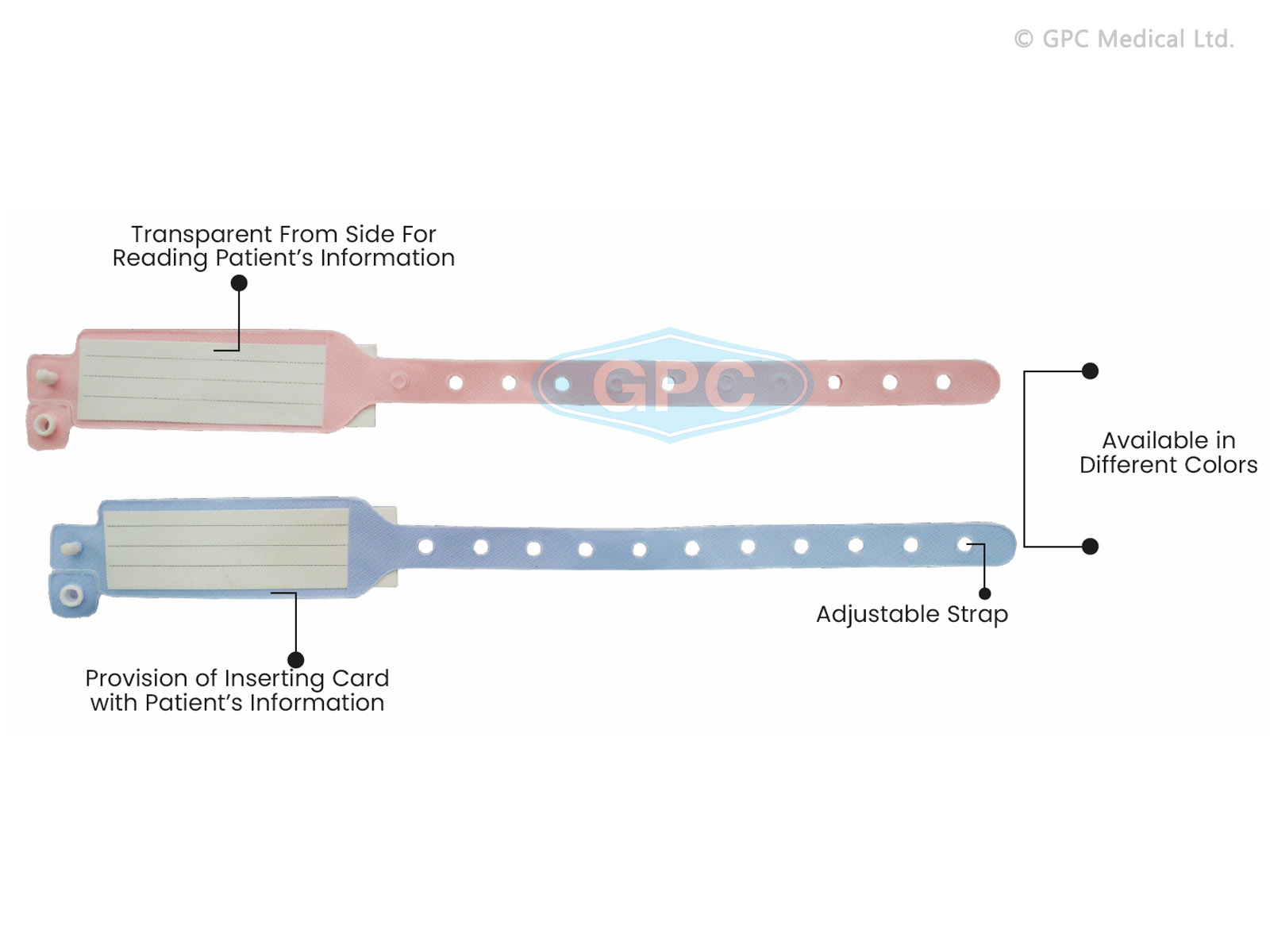Understanding the Technological Improvements Behind the Patient Identification Band
The Important Uses Patient Identification Band for Making Sure Patient Security
In the realm of healthcare, Patient security is a vital worry. One important device in attaining this is the Patient Identification band, an apparently simple yet greatly substantial instrument.
Understanding the Basics of Patient Identification Bands

The Function of Patient Identification Bands at fault Decrease
Provided the essential importance of exact Patient Identification in medical care, the usage of Patient Identification bands has actually shown to be extremely effective in decreasing mistakes. These bands, often furnished with barcodes or RFID chips, offer immediate access to a person's case history, allergies, and present treatments. This prompt accessibility reduces the chances of misdiagnosis, medicine mistakes, and unneeded tests. Identification bands foster efficient communication amongst the medical care group, therefore decreasing the danger of misunderstandings that can lead to clinical mistakes. Essentially, Patient Identification bands work as a crucial device in mistake reduction, improving Patient safety, and promoting quality treatment in health care setups. In the next area, the emphasis will certainly shift to just how these bands enhance the accuracy of medical diagnosis and therapy.

Enhancing Precision of Diagnosis and Treatment With Identification Bands
The use of Patient Identification bands dramatically boosts the precision of diagnosis and treatment. These bands play a crucial role in minimizing clinical mistakes, as they supply specific Patient details to healthcare professionals. Making sure proper medical diagnosis and boosting treatment precision therefore come to be achievable goals with these Identification devices.
Minimizing Clinical Mistakes
Patient Identification bands play a crucial function in mitigating such risks - patient identification band. By providing instant and accurate Identification, these bands make certain that healthcare companies have the correct Patient information at their fingertips. Hence, the utilization of Patient Identification bands considerably reduces misidentification, enhancing the accuracy of medical diagnosis and therapy, and subsequently lessening the occurrence of medical mistakes.
Improving Therapy Precision
Patient Identification bands, as mentioned earlier, significantly curb medical mistakes by guaranteeing correct Patient Identification. This, subsequently, pushes renovation in therapy accuracy. These bands, including vital details like the Patient's name, date of birth, and one-of-a-kind Identification number, contribute in matching the Patient to the ideal medical diagnosis, case history, and therapy plan. This eliminates the threat of complication or mix-ups, especially in high-volume medical setups where multiple clients might share similar names or signs and symptoms. Healthcare suppliers can provide precisely targeted treatments, minimizing misdiagnoses or inaccurate drug. Thus, Patient Identification bands serve as a cornerstone for individualized and precise treatment, reinforcing not only patient safety however also their confidence in the medical care system.
Guaranteeing Correct Diagnosis
Virtually every healthcare expert counts on Patient Identification bands to boost the accuracy of medical diagnosis and treatment. Identification bands provide immediate accessibility to important Patient info, including clinical background, allergic reactions, and current medications, which are important for accurate medical diagnosis. By cross-referencing the data on the band with the Patient's digital wellness records, clinicians can validate the Patient's identity, making sure the proper diagnosis.
Impact of Patient Identification Bands on Surgical Security
In spite of their seeming simplicity, Identification bands play an important function in guarding people throughout operations. These bands act click over here now as the key resource of Patient details, making sure precise Identification and stopping clinical mistakes, such as wrong-site, wrong-procedure, and wrong-patient surgical treatments. Each band includes crucial information, consisting of the Patient's name, day of birth, and clinical document number, which clinical personnel can cross-check with the medical routine and Patient's chart. This verification process minimizes the risk of miscommunication or complication, especially in high-stress setups like the operating area. Therefore, the diligent use of Patient Identification bands significantly contributes to surgical safety, boosting the general high quality of health care and Patient depend on in medical establishments.

The Use of Identification Bands in Pediatric Treatment
The usage of Identification bands in pediatric care is of crucial relevance (patient identification band). Their function in preventing pediatric Identification mistakes is vital for making sure Patient safety. Furthermore, these bands can significantly enhance the effectiveness of pediatric treatment by streamlining Patient processes
Preventing Pediatric Identification Errors
While Patient Identification errors are an issue in all locations of health care, they are particularly startling in pediatric treatment as a result of the special vulnerabilities of this Patient populace. Pediatric individuals often can not connect properly, making Identification tough. Using Patient Identification bands plays an essential duty in reducing these dangers. Inaccurate Patient Identification can lead to major clinical mistakes, including inaccurate medication giving and incorrect procedures. By using Identification bands, doctor can considerably minimize these errors, boosting Patient security. These bands, birthing essential Patient information, work as an immediate reference for treatment carriers, ensuring the ideal treatment is supplied to the appropriate Patient. Therefore, Identification bands are a crucial tool in protecting against pediatric Identification mistakes.
Enhancing Pediatric Treatment Efficiency
By guaranteeing accurate Patient Identification, these bands reduce errors, conserving time for medical professionals. The details had in the band, such as a patient's name, age, and medical history, makes it possible for swift and accurate medical diagnosis and treatment. This is this content particularly important in pediatric setups where clients might not be able to connect efficiently.
Technical Innovations in Patient Identification Bands for Improved Security
As healthcare systems constantly evolve, the importance of Patient Identification bands has progressively drawn attention from medical experts worldwide. Technical innovations have boosted the functionalities of these bands, changing them right into important tools for Patient security - patient identification band. They likewise help with reliable Patient monitoring, making certain Patient safety and boosting the overall quality of healthcare services.
Conclusion
Patient Identification bands play a crucial role in health care, making sure Patient security and precision in medical diagnosis and treatment. They stay a crucial device in the mission for boosted Patient safety and top quality care shipment.
Offered the critical value of precise Patient Identification in medical care, the usage of Patient Identification bands has actually confirmed to be highly effective in decreasing errors. In essence, Patient Identification bands serve as a critical device in mistake reduction, enhancing Patient safety, and promoting quality care in healthcare settings.Patient Identification bands, as discussed earlier, dramatically curb medical errors by making certain correct Patient Identification. These bands, having important info read the article like the Patient's name, date of birth, and unique Identification number, are important in matching the Patient to the suitable medical diagnosis, medical background, and therapy strategy. The persistent usage of Patient Identification bands significantly contributes to surgical security, improving the total high quality of health care and Patient trust in clinical organizations.